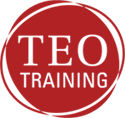
Investment in fixed assets is a significant part of the capital outlay for many businesses. The income tax deduction for expenditure on feasibility, pseudo improvements, and repairs & maintenance of these assets, is an area that continues to cause many problems for business owners and accountants.
The current income tax rules are generally found under the general deductibility and capital limitation rules. For example, there is no specific provision that addresses the deduction to be allowed for repairs and maintenance.
The lack of legislation in this area provide uncertainty in distinguishing between capital and deductible expenditure. In addition, over the last 7 years there have been a number of changes to the treatment of repairs & maintenance expenses on “buildings”.
The course will clarify the income tax treatment, including a review of:
- The tests established by the courts to distinguish between capital and revenue expenditure
- The process developed by the courts to determine the deductibility of repairs and maintenance expenditure
- The relevant court cases
- Repair of recently acquired assets
- Expenditure on leaky homes
- Earthquake strengthening expenditure
- The treatment of demolition costs
- The treatment of expenditure on existing buildings.
In each area we will review the law and its application as well as a working through practical examples to illustrate that issue.
Upon satisfactory completion of this activity you will be able to:
- understand the rules and principles better
- identify relevant tax issues
- have a greater awareness of tax implications in each of the areas.
Total CPD hours: 3
Suited to:
This course will be suited to intermediate through to advanced accountants in public practice who are dealing with SMEs. It will
also be suitable for corporate accountants of SMEs.
Presenter:
Mike Hadwin, Director, Symmetry Advisory
Mike is a regular presenter for TEO Training. You’ll learn from Mike’s 30-plus years of tax experience as a public CA and facilitator. His clear presentation style enables you to quickly understand and apply practical learning concepts to common situations you may face in your role.
